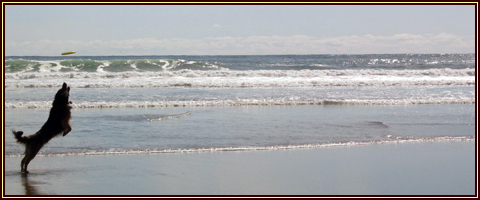Freshwater Aquarium Temperature – Things You Should Know
What is the Best Temperature?
So your tank is almost ready, you have added the gravel and filled it with water. Now you need to set your freshwater aquarium temperature with the heater and thermostat. What temperature should that be? As a rule most freshwater aquariums are best kept at around 73 to 82 degrees Fahrenheit (23 to 28 Celsius). What you actually set the temperature at will depend upon whether you live in a warm or cool climate. The reason being that you want to avoid freshwater aquarium temperature fluctuations as far as possible. So if you live in a warm climate you would want to set the thermostat at about 80 degrees Fahrenheit on the other hand in a cooler climate 75 degrees Fahrenheit would be best. This has the effect of minimising the impact of ambient temperature changes on the freshwater aquarium temperature.
You should bear in mind that the warmer the water the less oxygen it can hold and therefore higher levels of aeration should be employed. It is also worth mentioning that an acrylic tank is a much better insulator than a glass tank and a reasonable tight fitting lid will also reduce temperature fluctuations.
In general the actual set temperature is less important than sudden changes in temperature. Rapid temperature rises or falls really stress out you fish making them prone to disease and can kill them. Large scale freshwater aquarium temperature changes in less than 24 hours cause a number of fish problems including at worst the ‘shakes’ or ‘shimmies’, ichthyophthritis (ick), fungus and at best a general decline in health.
What Size Heater?
The quantity of water to heat and the temperature difference between the room and the heated water dictates the required heater wattage. As a general rule you need 2 watts for raising each gallon of water 5 degrees above surrounding temperature. Two heaters may be required for larger tanks which have high temperature differentials. In such cases they should be put at each end of the tank.
You should not have a larger wattage heater than as calculated above. Two reasons for this are one, a very powerful heater as it cycles with the thermostat could cause a rapid temperature rise and two, if the thermostat goes wrong a large heating element would fry your fish within a few hours.
What kinds of heaters are there?
There are three kinds of heater, all work well.
1. Immersible heaters. These are inexpensive and easily found so they are the most common. They dangle into the water hanging on the back or side of the tank. Above the water surface there is a temperature control. Their disadvantage is that some people consider them to be an eyesore and prefer the heater to be hidden from view.
2. Submersible heaters. As the name implies these can be completely submerged in the aquarium. Their biggest advantage is that they can be easily hidden behind plants and rocks. These kinds of heaters are more robust and easily keep a set tank temperature. While they cost more than immersible heaters they are not expensive, they are easy to use and being slimline easy to hide.
3. Filter heaters. These are a really good option because they keep the freshwater aquarium temperature even throughout the tank. They heat the water as it moves through a filter. They are the most expensive heater type but they do operate as a filter unit as well. The big plus of this type of heater is that it is outside your aquarium, so it doesn’t take up space inside and you don’t see it at all!
Don’t Forget a Themometer!
One final word, make sure you have a good thermometer in your tank. Before use chack that its calibrations are correct. After that you should check the reading every day on a regular basis. The best time is to glance at it as you feed your fish. This will make you aware of any freshwater aquarium temperature troubles before they affect the health of your precious fish.
Conclusion
So That’s it. The actual freshwater aquarium temperature depends upon where you live but whatever it is it should be tightly comtrolled by your thermostat. Keeping temperature fluctuations to a minimum is much more important than what you select as your freshwater aquarium temperature.







